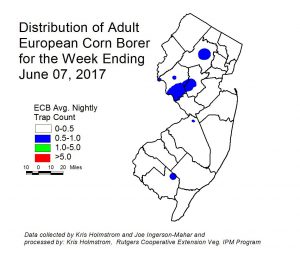Based on our degree-day model for Sparganothis fruitworm, first eggs laid are expected at around 681 DD (see chart). As of June 13, Sparganothis has accumulated 814 DD (using March 1 as biofix) or 774 DD (using April 1 as biofix). This indicates that egg laying has just started but eggs are not expected to hatch yet. Reminder that a single insecticide application, i.e., post-bloom application with Delegate, Altacor, Diazinon, or Intrepid, aimed at Sparganothis larvae will likely have the greatest effect if it is timed for peak egg-hatch/larval-emergence, which is approximately 1,400 DD and will most likely coincide with the 1st-2nd week in July. I will keep you updated as the season progresses.

Sparganothis fruitworm degree day benchmarks



